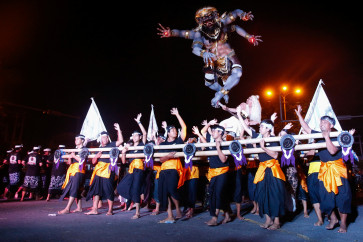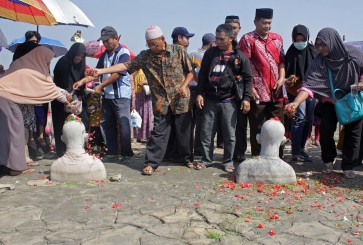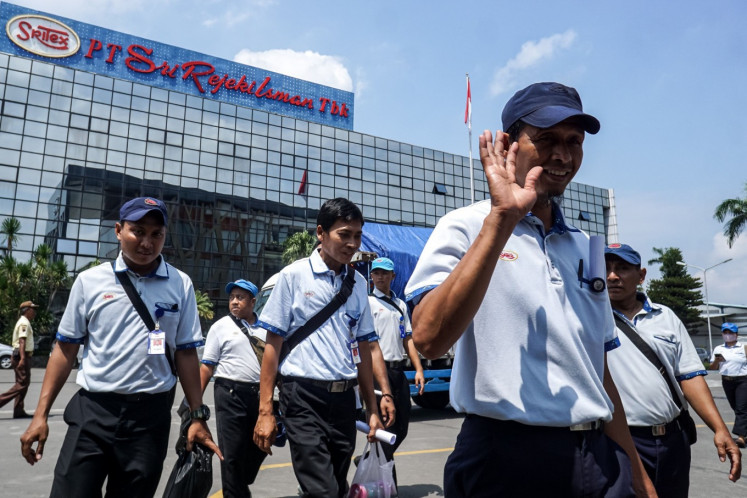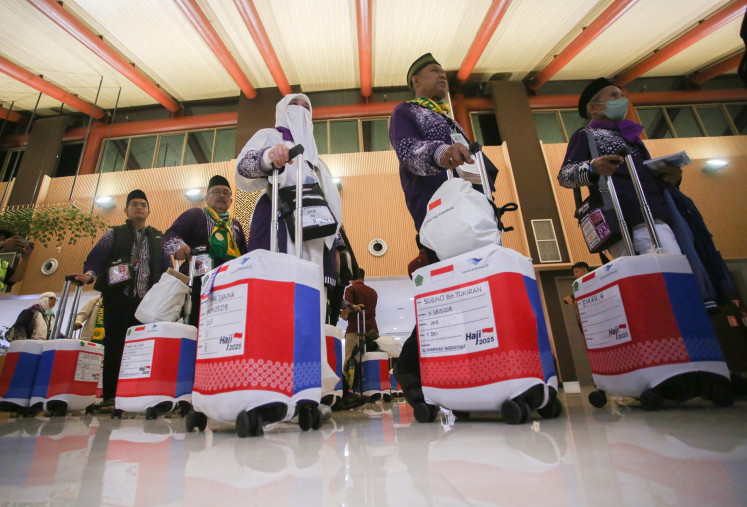The changing nature of the Exclusive Economic Zone
When the United Nations Convention on the Law of the Sea (UNCLOS) came into force in 1982, it made significant changes to the world map
Change text size
Gift Premium Articles
to Anyone

W
hen the United Nations Convention on the Law of the Sea (UNCLOS) came into force in 1982, it made significant changes to the world map. Previously, people measured territorial sea as 3 miles (4.8km) seaward from the coastal state’s baseline, this zone was then increased to 12 miles.
In addition, UNCLOS introduced a new concept, known as the Exclusive Economic Zone (EEZ), which is a prolongation of coastal states’ rights. The length of the zone is significant, since it covers up to 200 miles seaward from the baseline. According to UNCLOS, all living and non-living resources within the water column, including those on the seabed and the subsoil beneath the zone belong exclusively to the coastal state.
For those states with long coastlines, this zone became especially significant as a national asset as well as frequently the main source of income.
Apart from giving economic benefits to coastal states, the EEZ concept also ended the debate on its status as a sui generis — neither territorial sea nor high sea. However some people argue that the EEZ is principally the high seas within which the coastal state has certain economic rights.
Conversely, some regard the EEZ as the coastal state’s property while acknowledging the rights of other states, hence any dispute over “rights unassigned” (residual rights) should be in favor of the coastal state. The discrepancy regarding residual rights escalates when it relates to politically sensitive or strategic matters such as military activities.
While the issue remains unresolved, a few states have acted unilaterally, diverging from the original EEZ concept. In fact, UNCLOS stipulates, “no reservations or exceptions may be made,” yet in reality, some states have passed their own national legislation to temper the UNCLOS’ articles.
Iran for instance, in 1993, enacted legislation to prohibit foreign military activities and practices within its EEZ. Similarly, in 1995, India stated that its government regarded the UNCLOS provisions as prohibiting military exercises or maneuvers by other countries in the EEZ or continental shelf (CS) without the consent of the coastal state. The following years, Malaysia (1996) and Pakistan (1997), both issued declarations that were substantially in line with India’s.
Even the US, which favors the first argument and views EEZs as high seas, applies double standards. In the Federal Aviation Administration Regulations, there is a compulsory procedure upon entering the US Air Defense Identification Zone (ADIZ). Any aircraft that fails to comply with the procedure may result in being forced or even shot down by the US military. This zone extends up to 300 miles seaward from the US coastline. As such this is inconsistent with the designated airspace status, which should theoretically be free since it derives from the EEZ and the high seas below.
Since such international relations can be anarchic, it is common for coastal states to act unilaterally — even though they deviate from international conventions such as UNCLOS. This becomes even more obvious when they have to face the reality of dealing with improved weapons technology.
According to the previous sea regime, the extent of the 3-mile territorial sea originated from the maximum range of cannon at that time. The extended 12-mile limit is still inadequate to anticipate any incoming threat from modern platforms.
As an illustration, the average speed of missiles and fighters is about Mach 0.6 to 1 (between 400 and 761 mph). This means that an attack could reach a coastline within only minutes. Therefore, in the near future, it is likely that coastal states will transform their EEZs into a buffer zone for external threat interdiction.
As an archipelagic state with a giant EEZ, Indonesia should embrace such a trend with a positive attitude and vision. In fact, most of the military documents, such as The White Paper and the Service Doctrines, have acknowledged the importance of the EEZ in our defense structure. In the Indonesian Military (TNI) Doctrine, Tri Dharma Eka Karma, for instance, it regards Indonesia’s EEZ as mandala utama or the main theater of the layered defense system, deployed by the TNI.
By such a statement, Indonesia signifies its EEZ as a critical terrain. In a strategic sense, it means that Indonesia should have the ability, at least, to identify any military activity within its EEZ – or even better, Indonesia should be able to interdict, deter and defeat any unlawful activity.
Nevertheless, there should be concrete action following the inclusion of EEZ terminology in the Indonesian defense “dictionary”. As the main theater, the EEZ should be the aim of force projection — we can come up with a new buzzword such as “EEZ warfare.” In this case, all efforts and doctrines need to have synergy in mastering tactics and techniques.
Furthermore, they must enhance the capability of military operations in the EEZ, both for war and peace. Regarding weapons procurement, particularly those costing billions of dollars of taxpayers’ money; they should follow a master blueprint that aims at enhancing dominance of the EEZ.
In conclusion, the state’s interests should prevail, even when they intersect with an internationally agreed law like UNCLOS. In this case, it should lead to alterations in the EEZ function, from purely economic to include the military. Indonesia needs to construe developments in the EEZ concept as an indication to start designing its own defense system.
Of course this does not mean that Indonesia should ignore international law. Indonesia must simply prepare for its own self-defense. In the prevailing anarchic world system with its “everyone-for-himself” principle, you will not get too much credit for being too much of a stickler to the law. On the contrary, when protecting what is yours you are ultimately on your own.
The writer has a master’s degree in maritime policy from the University of Wollongong, Australia, and a postgraduate diploma in strategic studies from Massey University, New Zealand.









